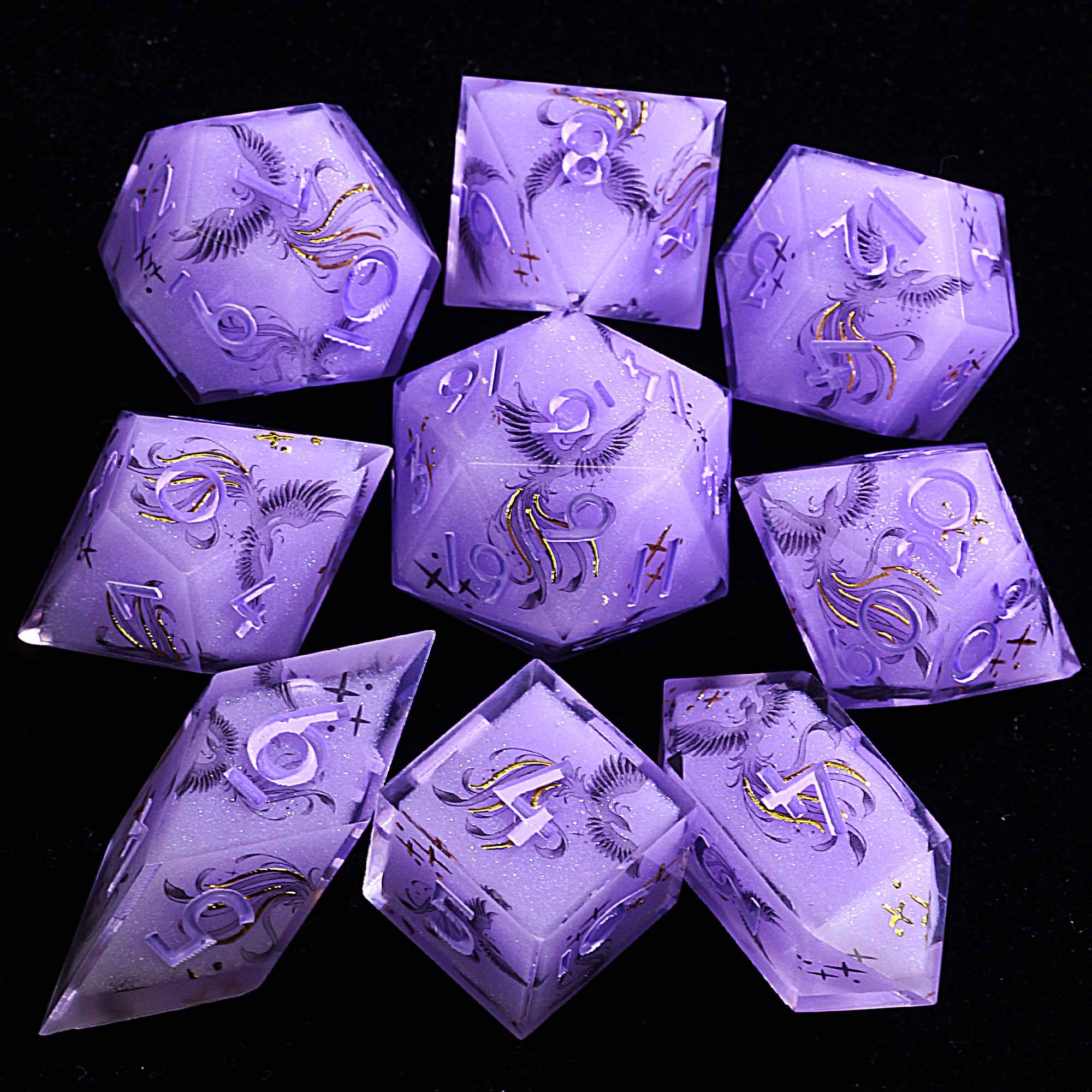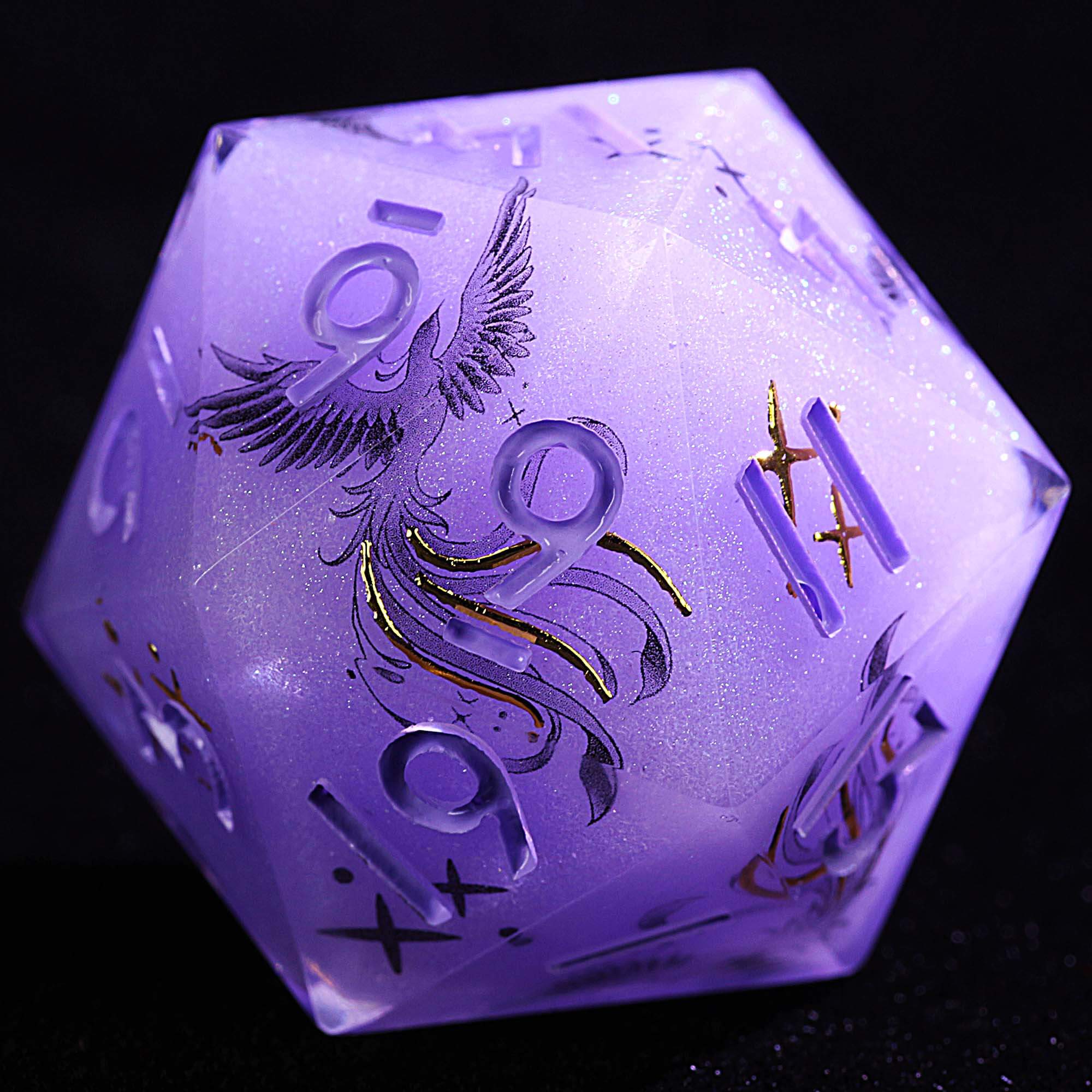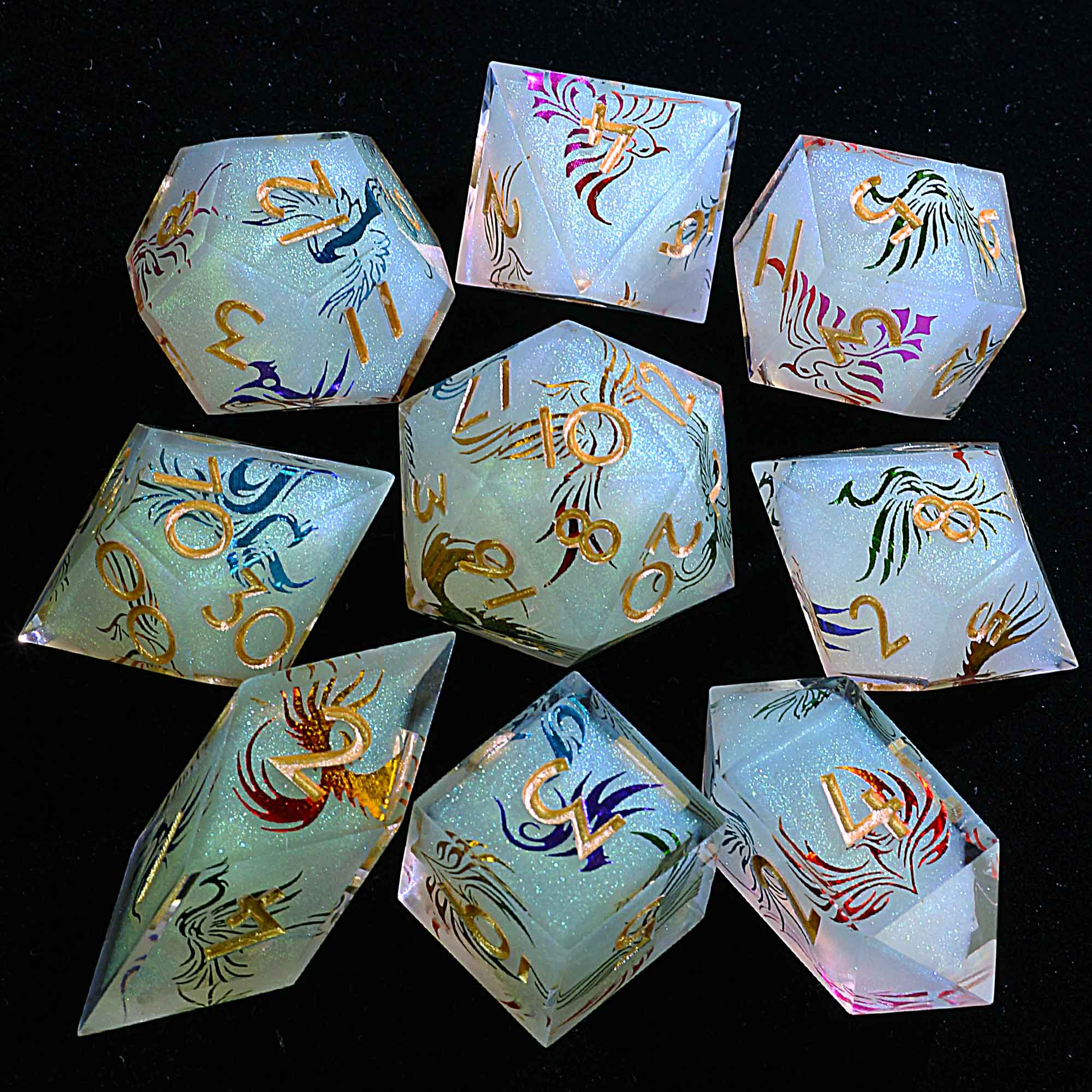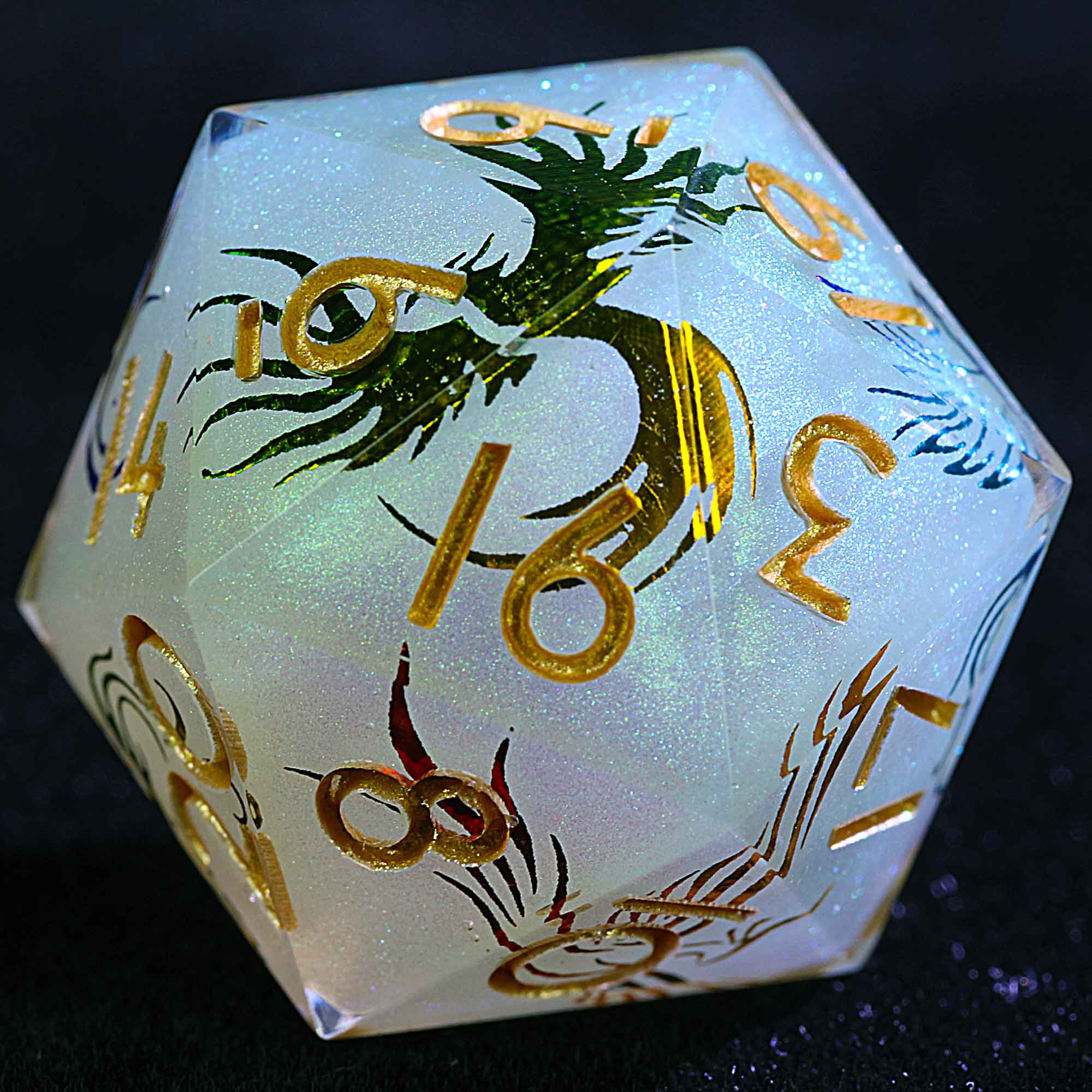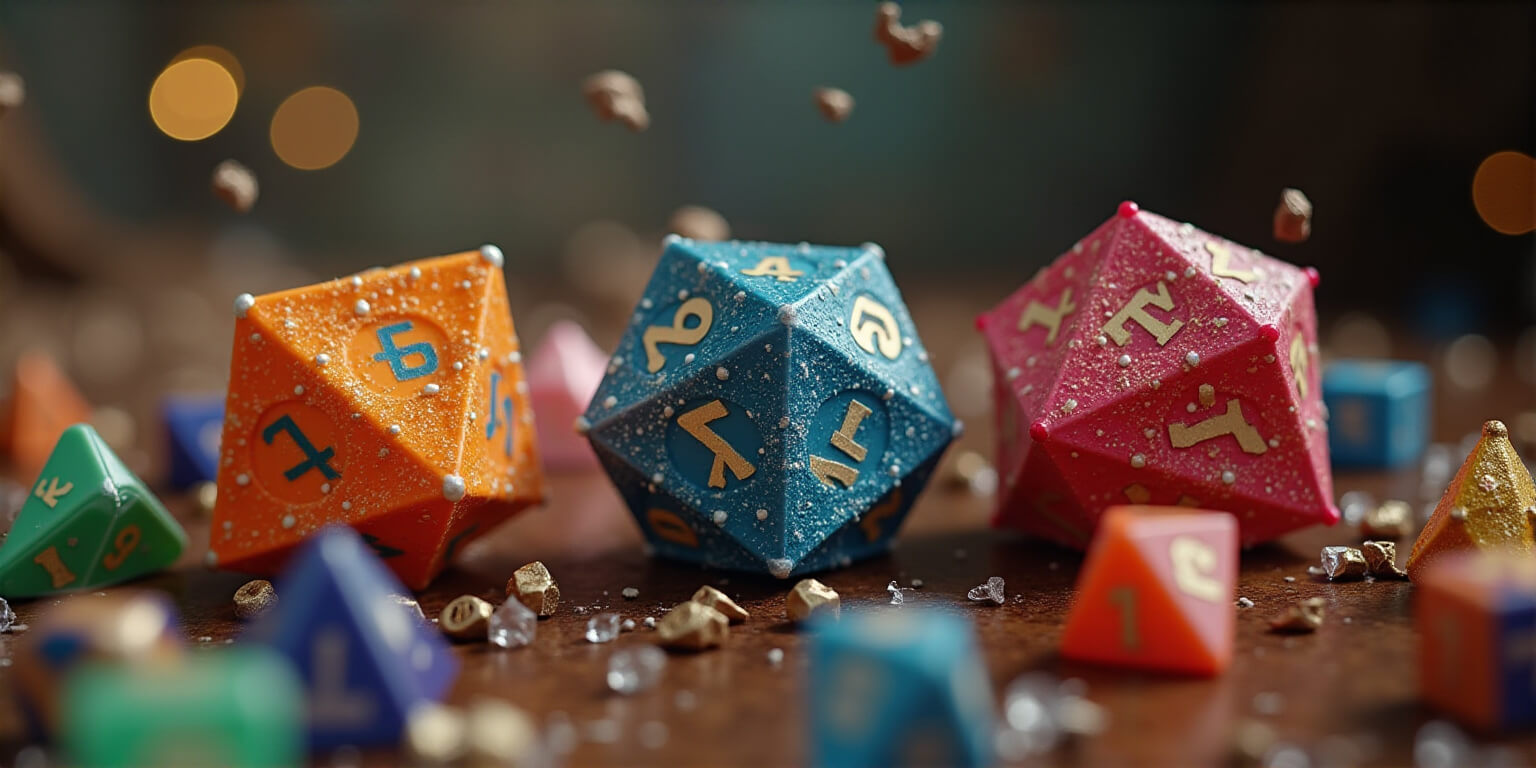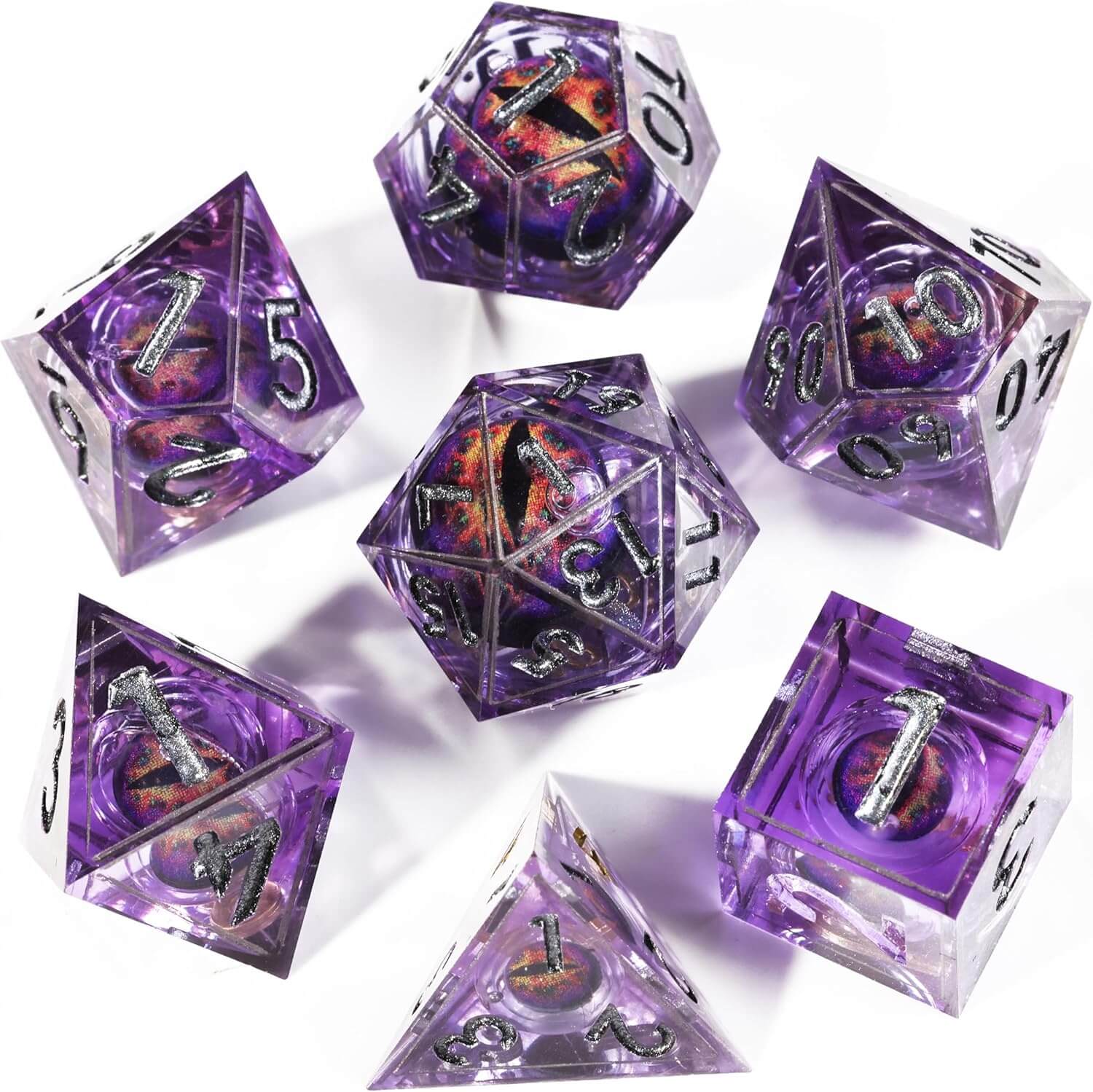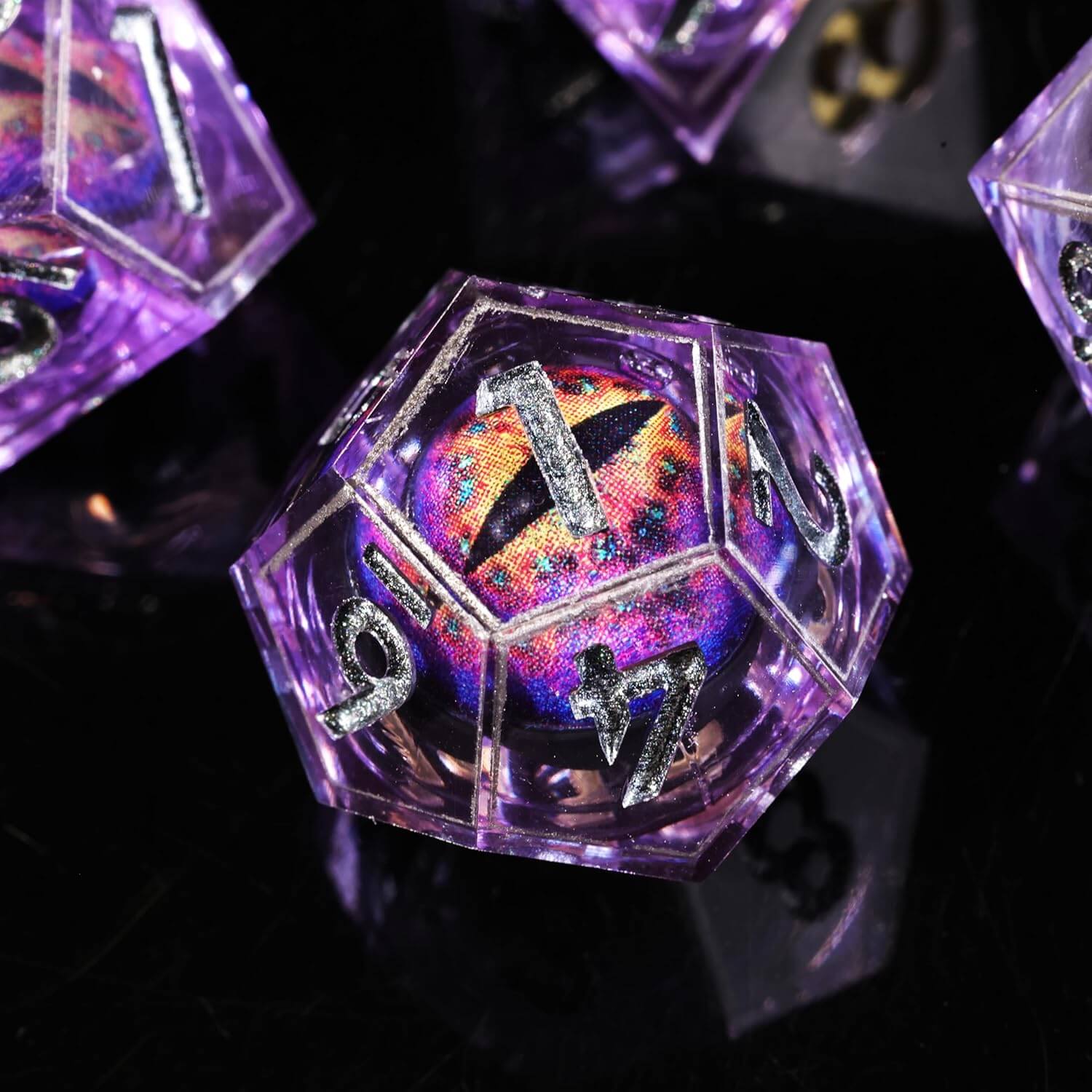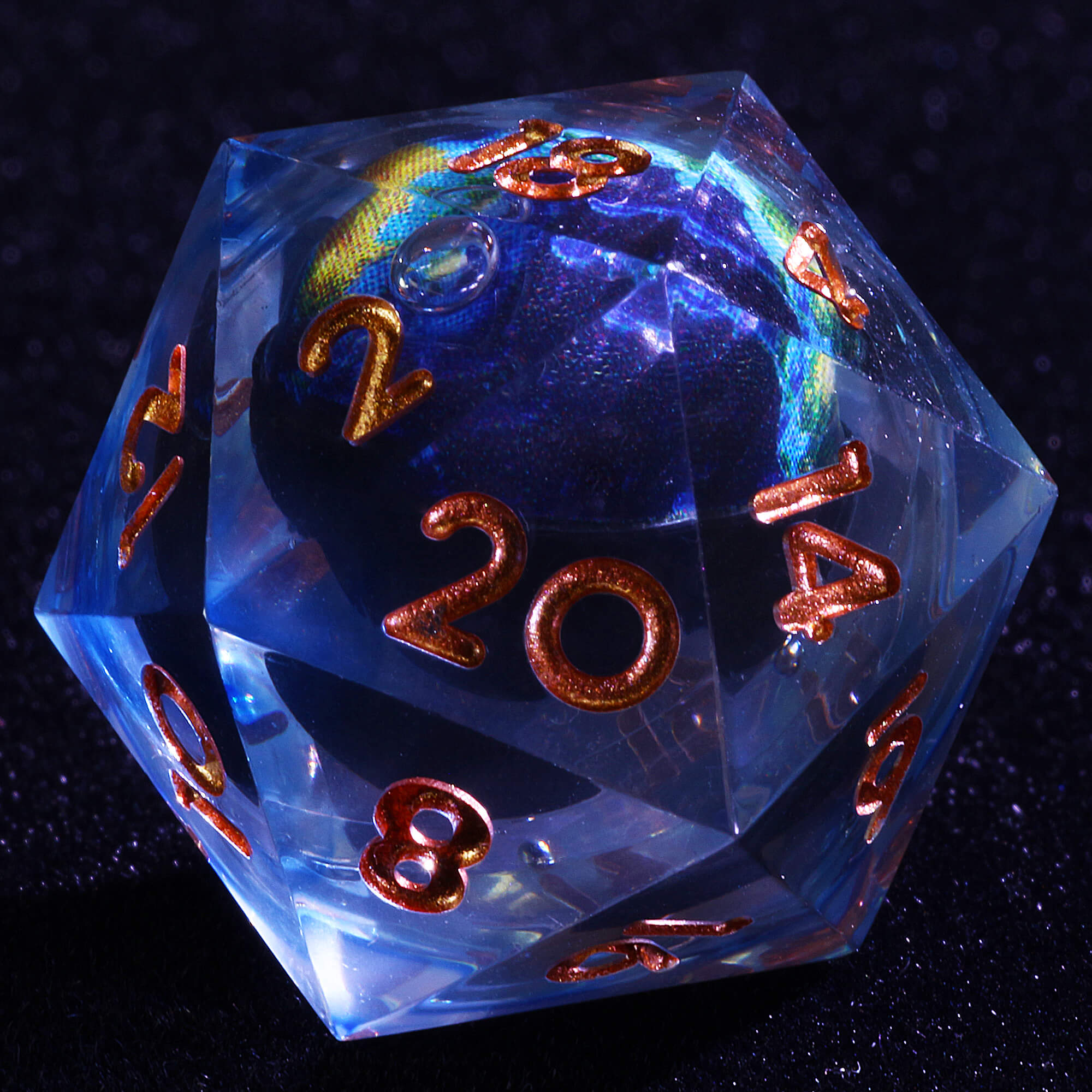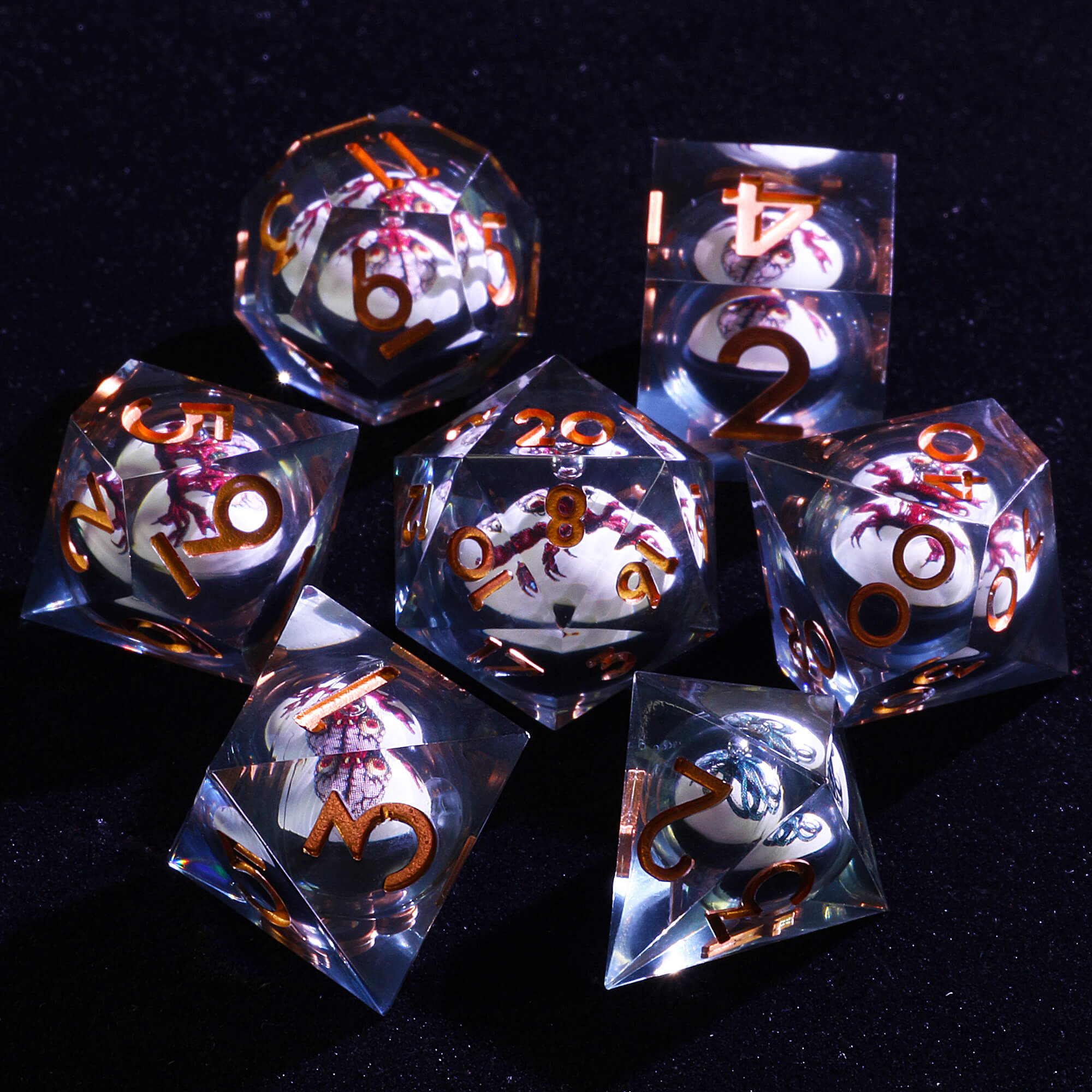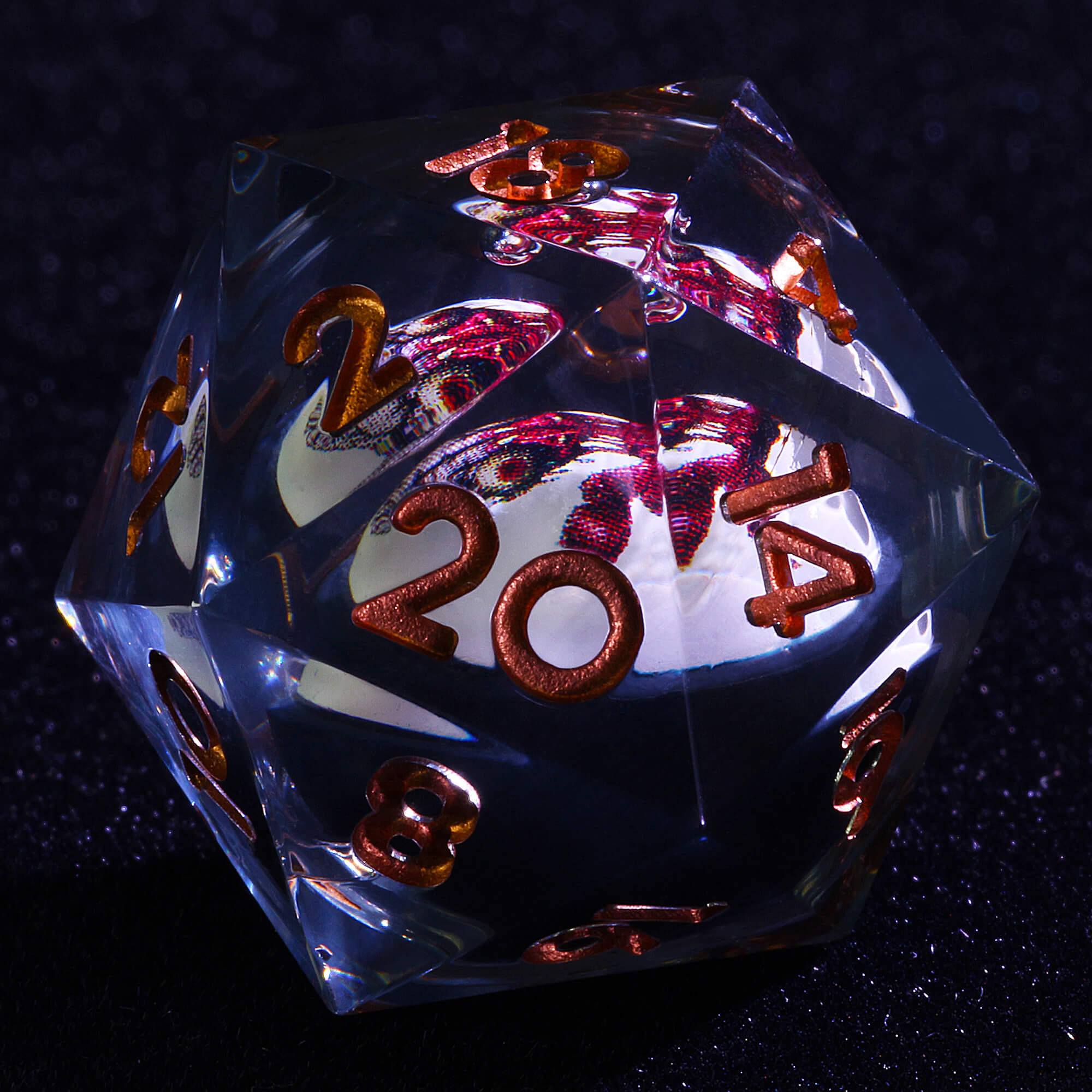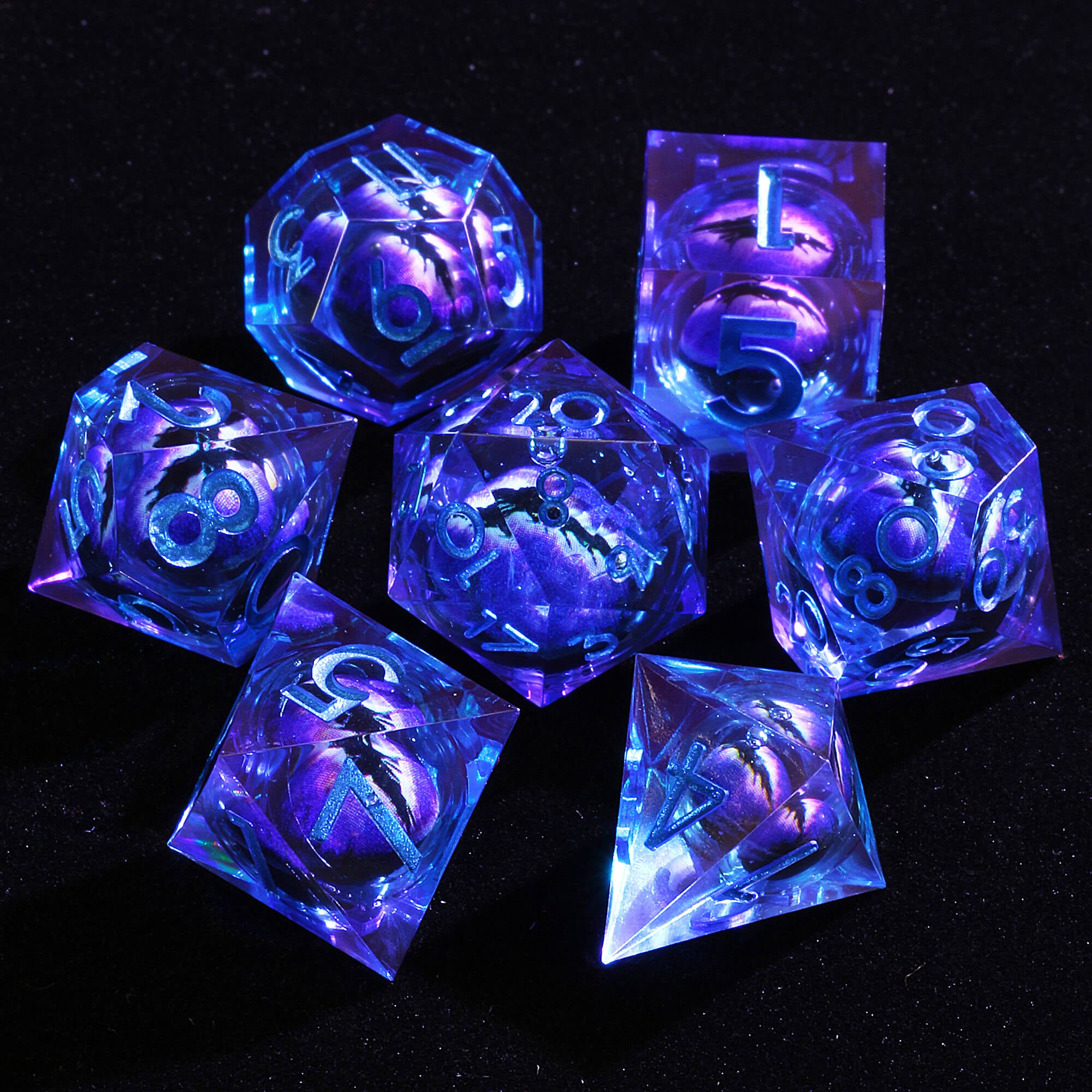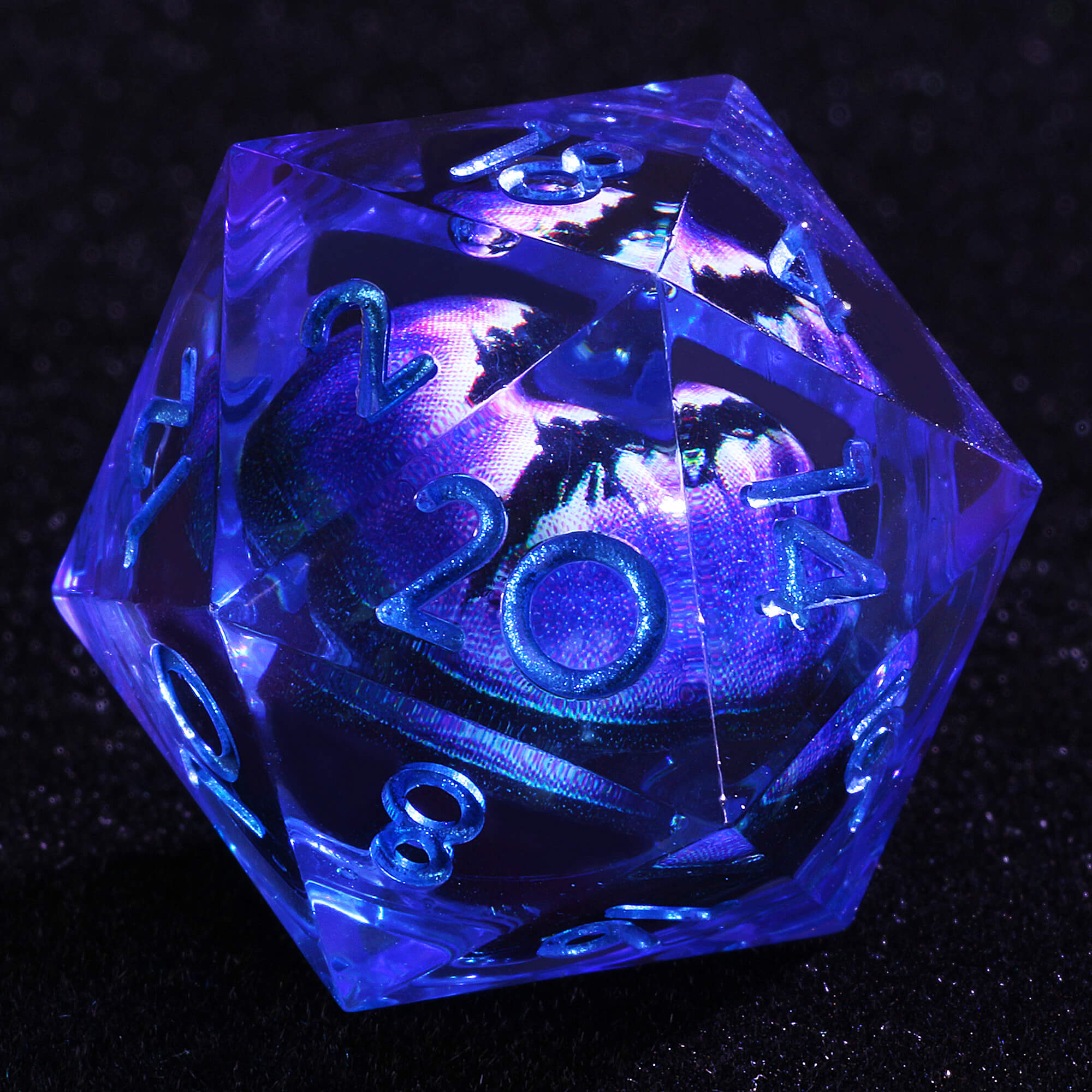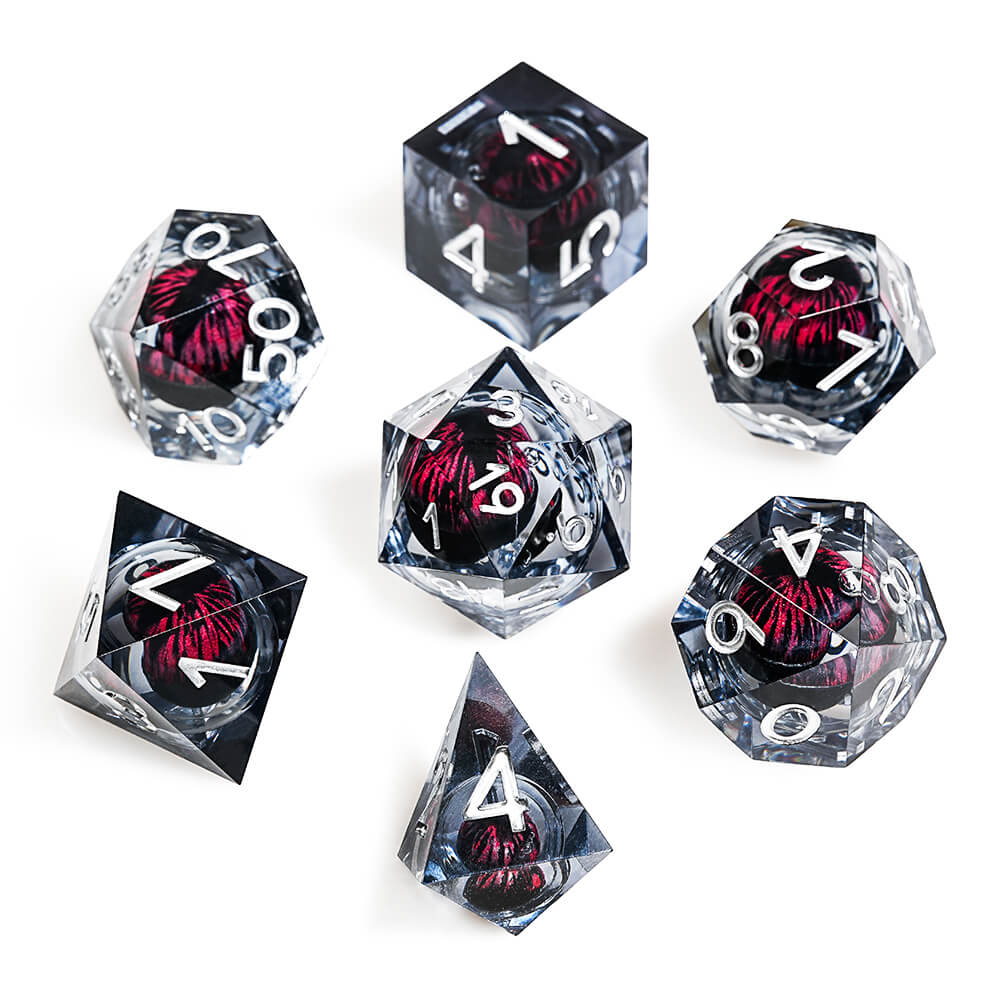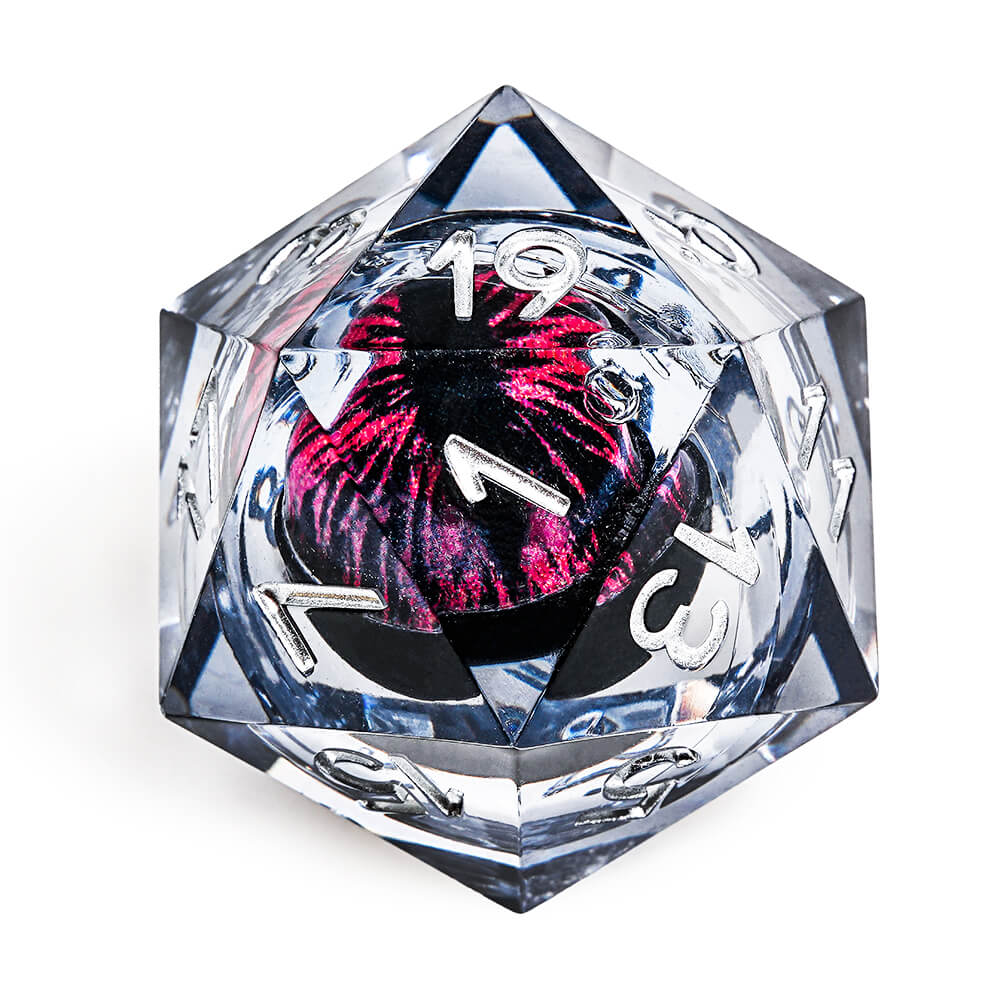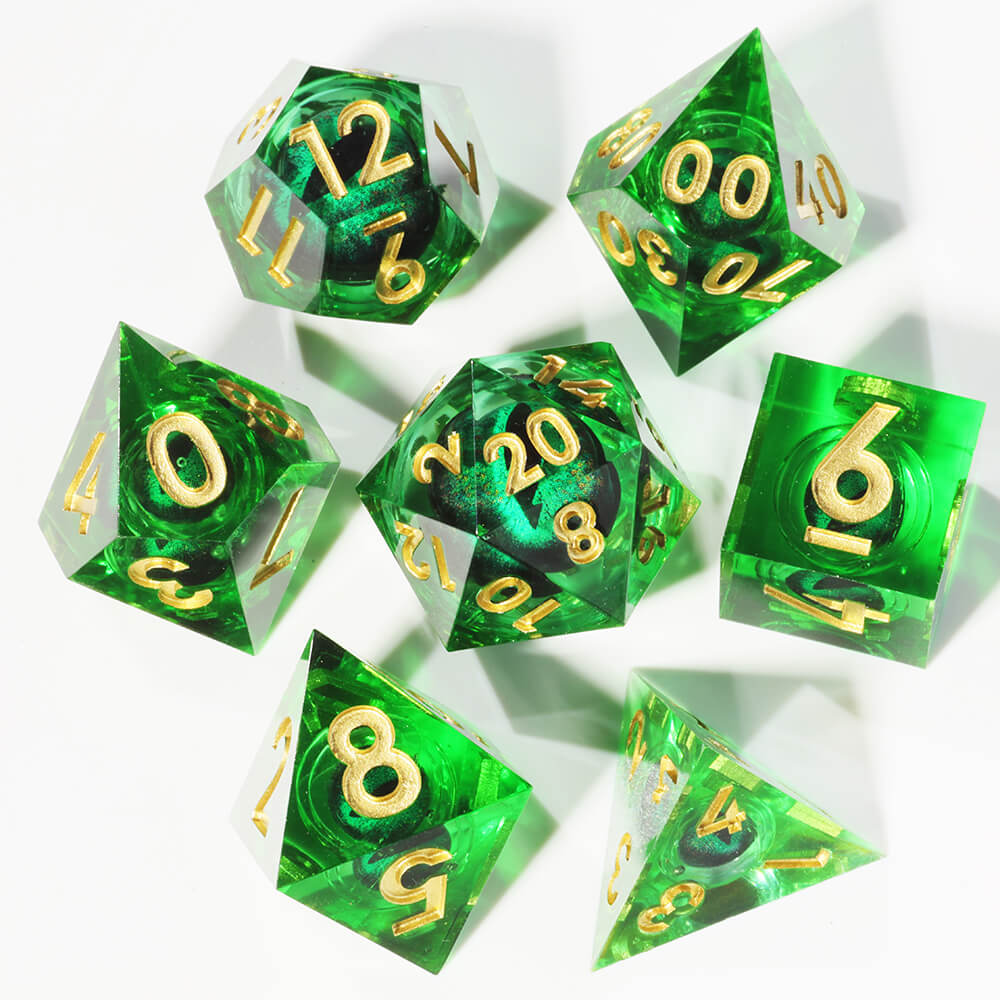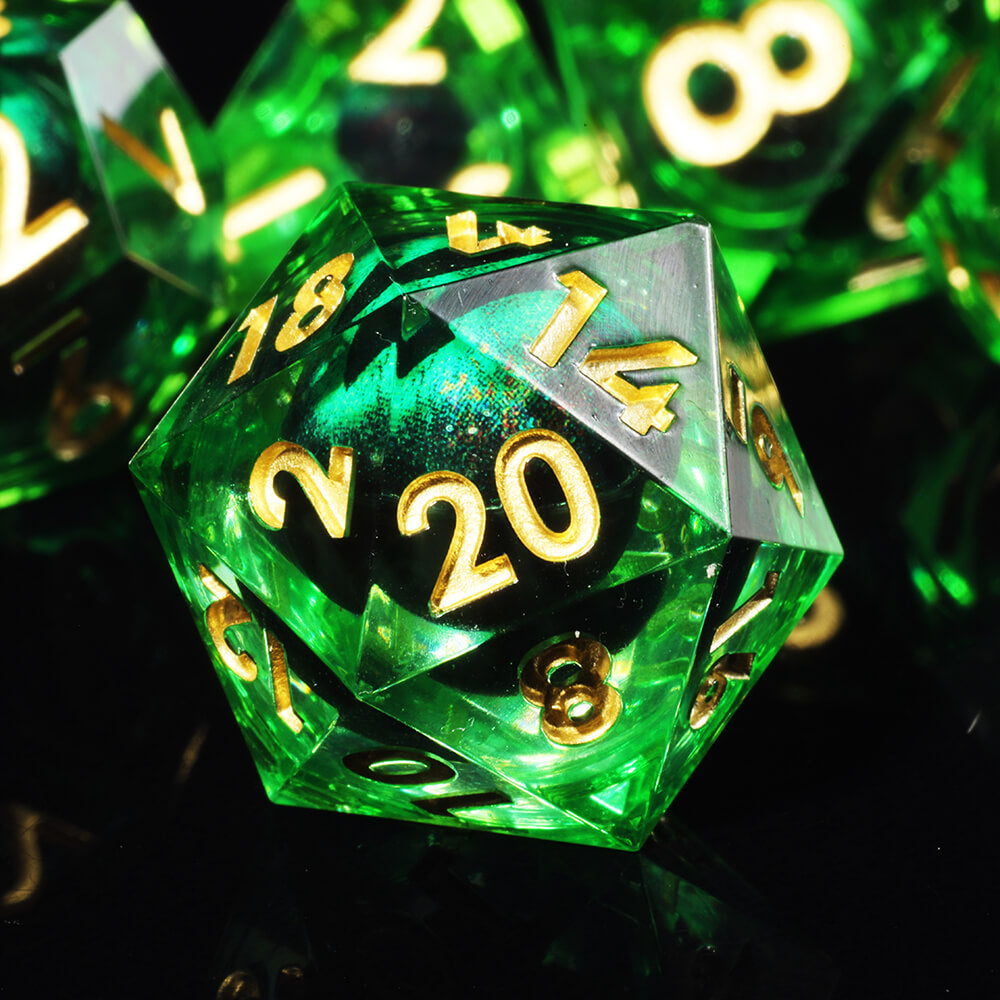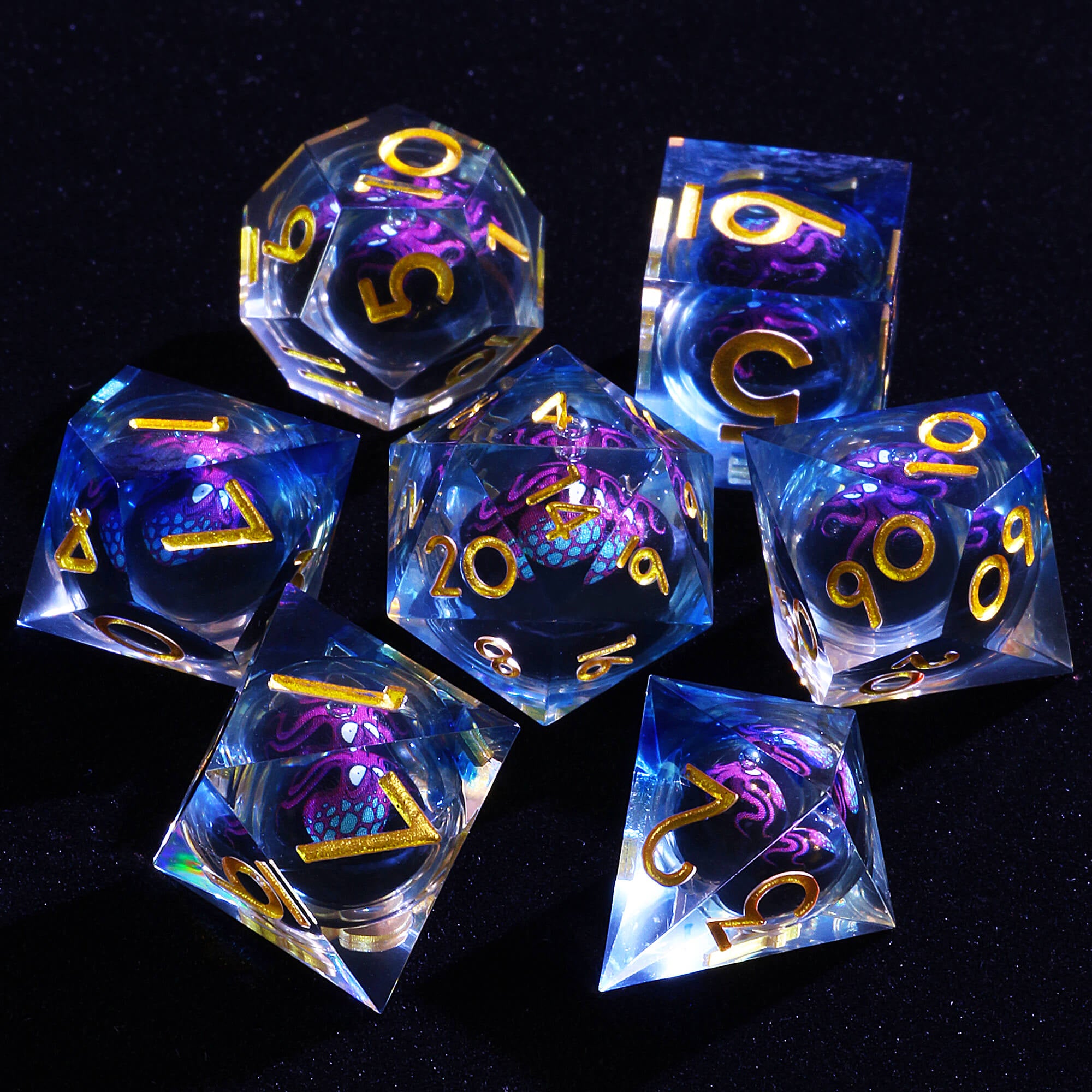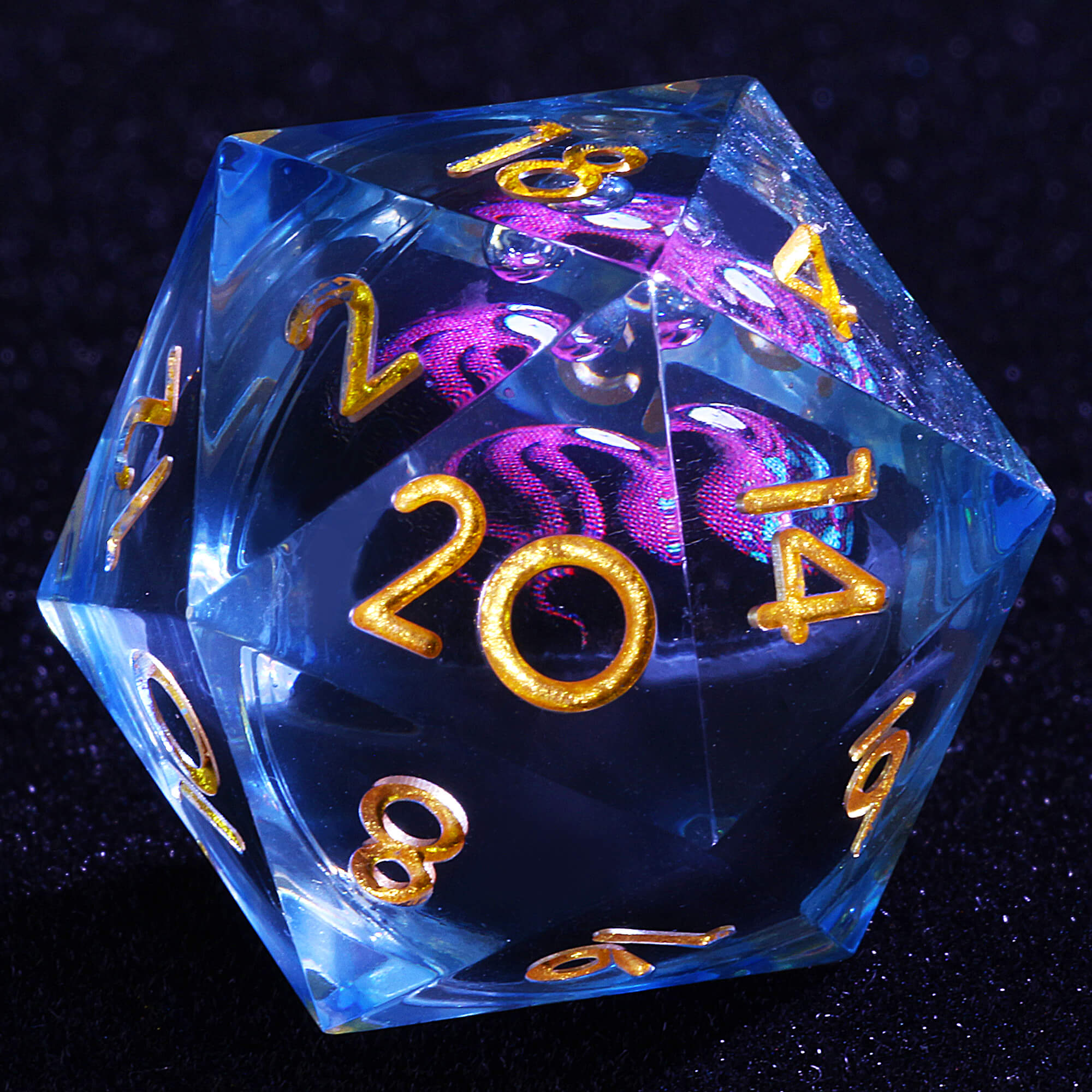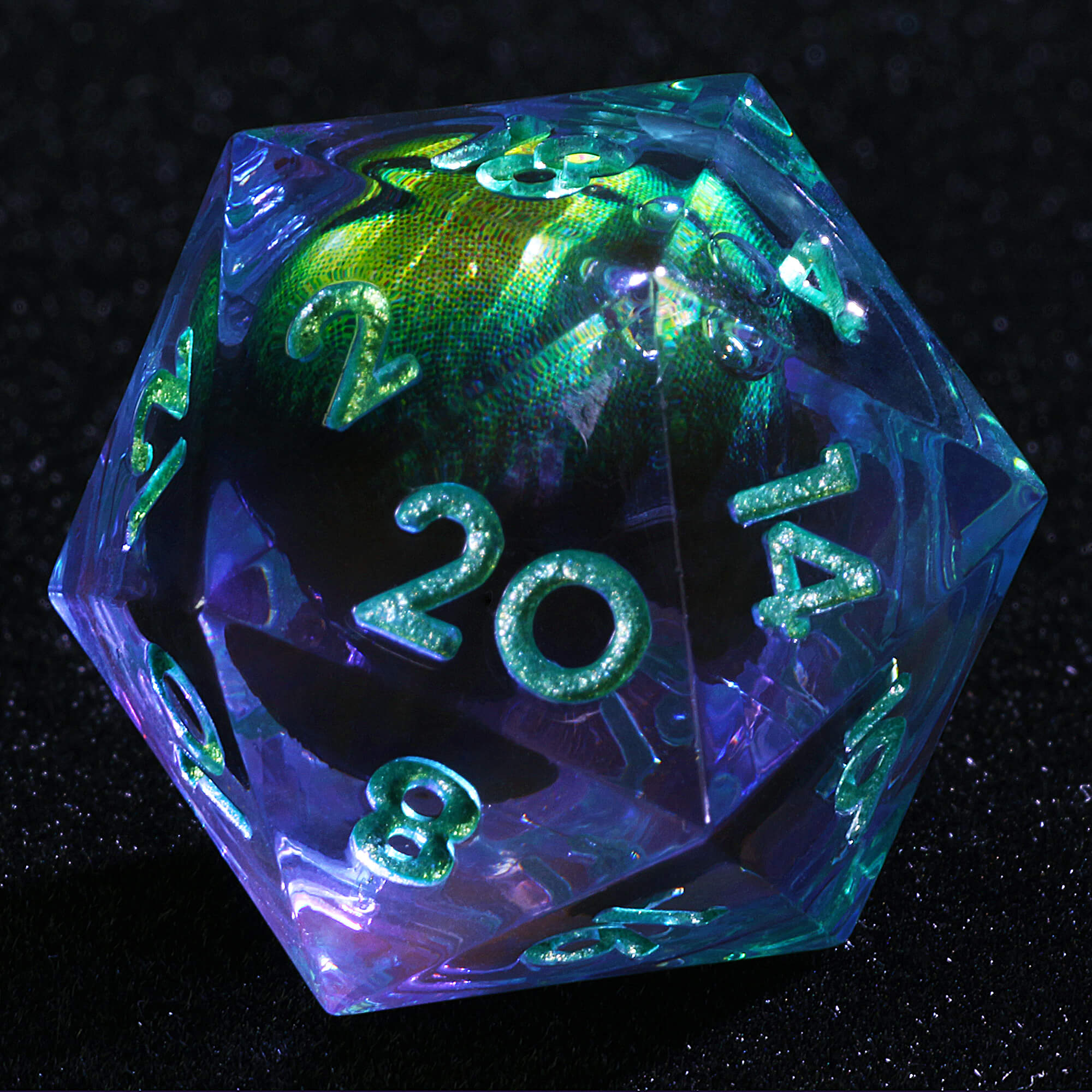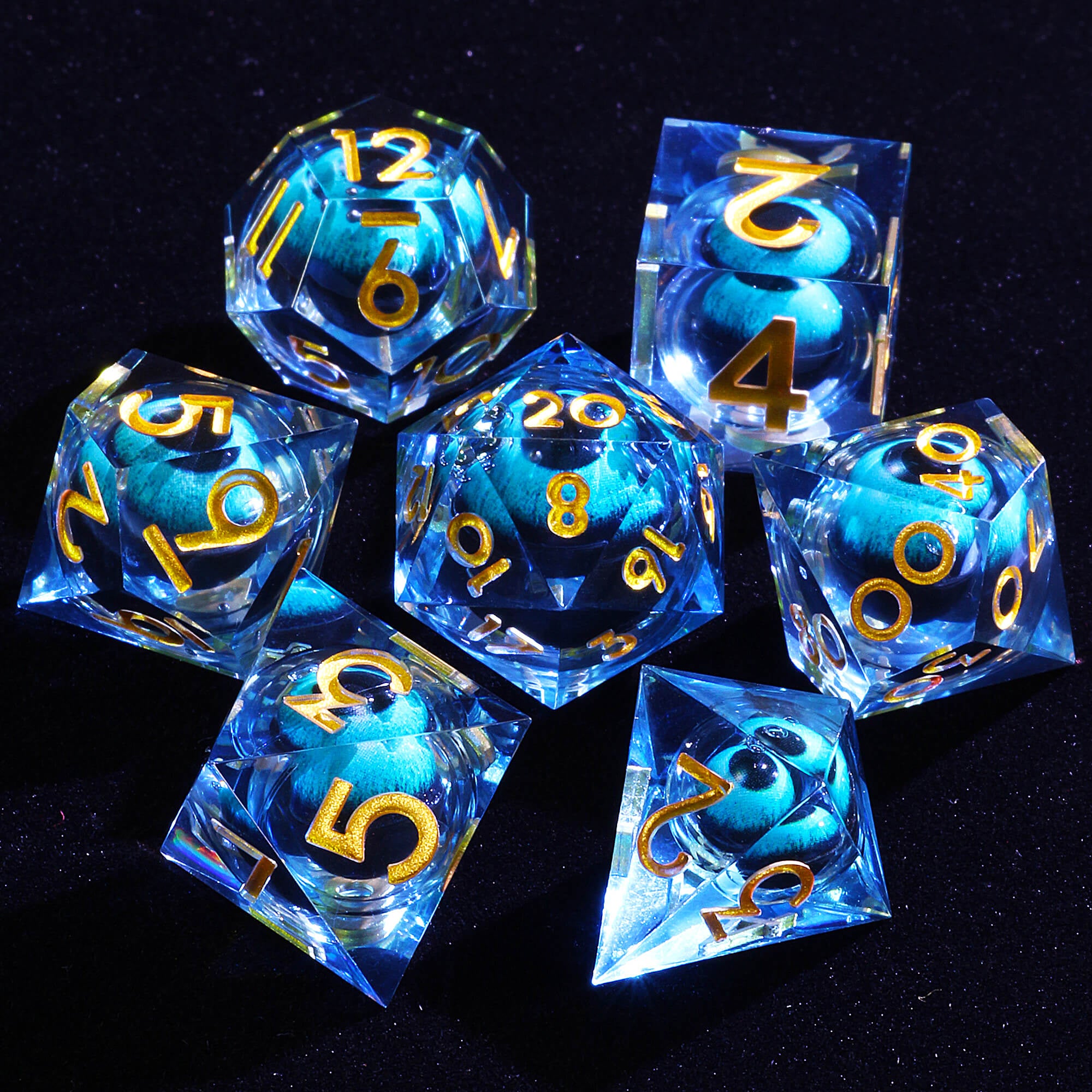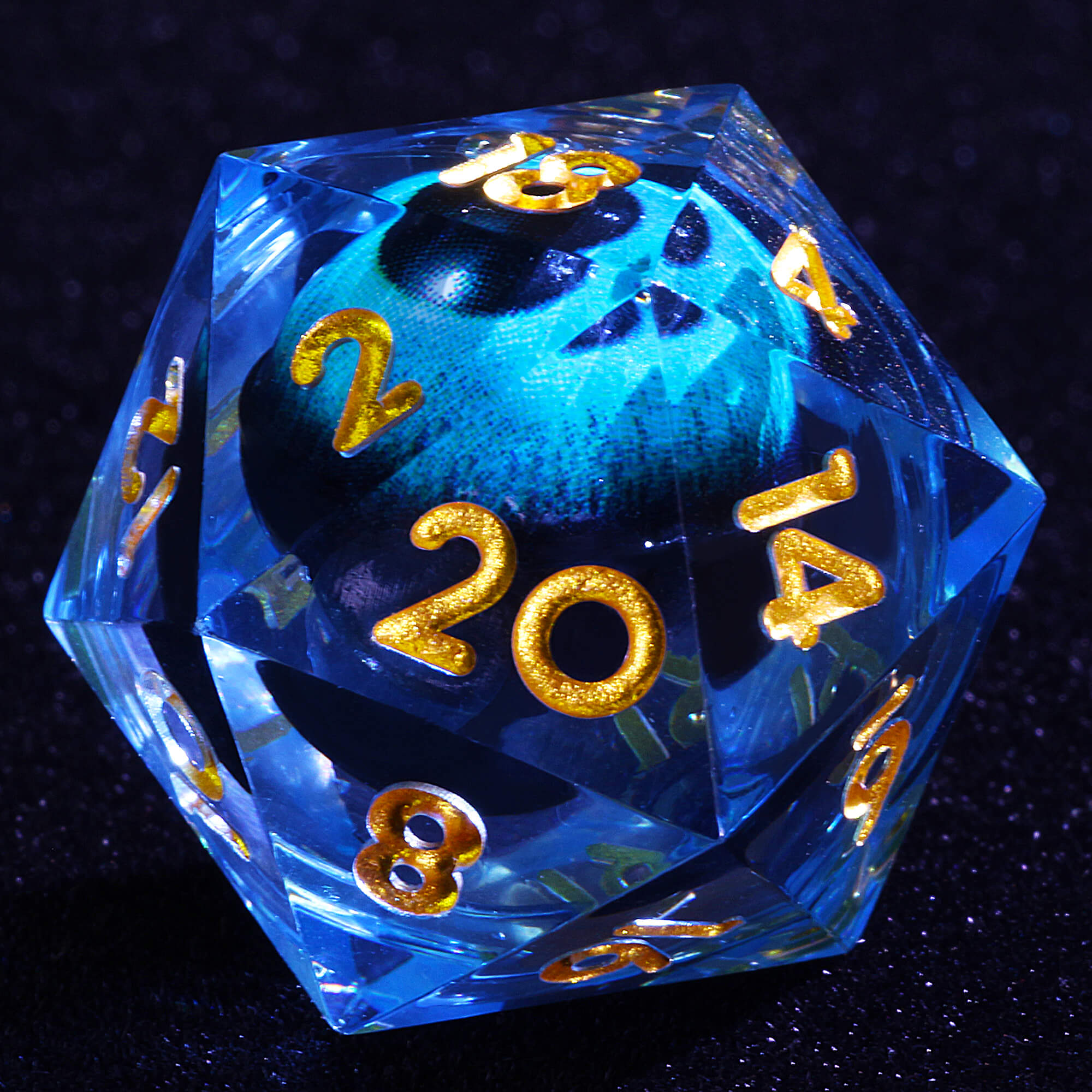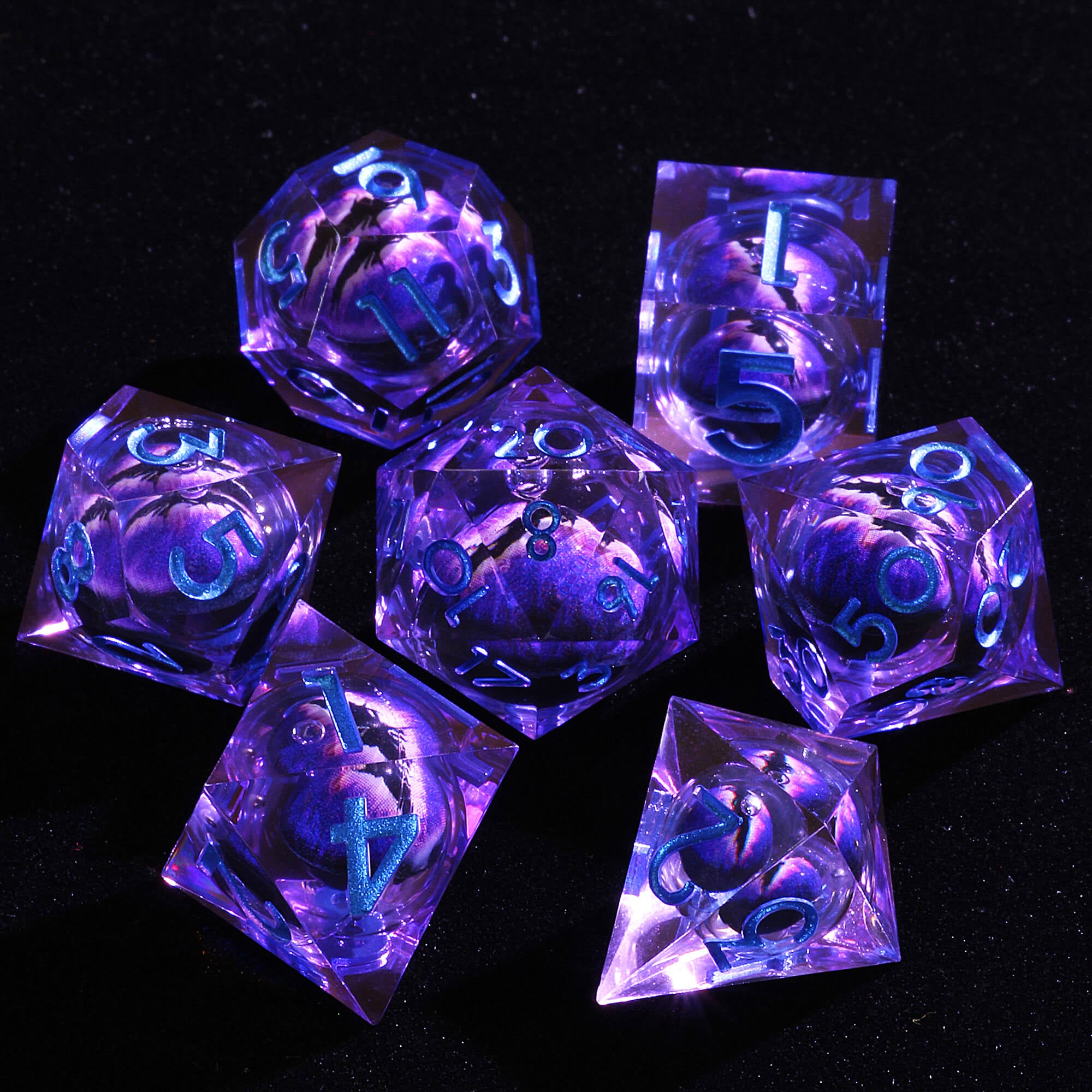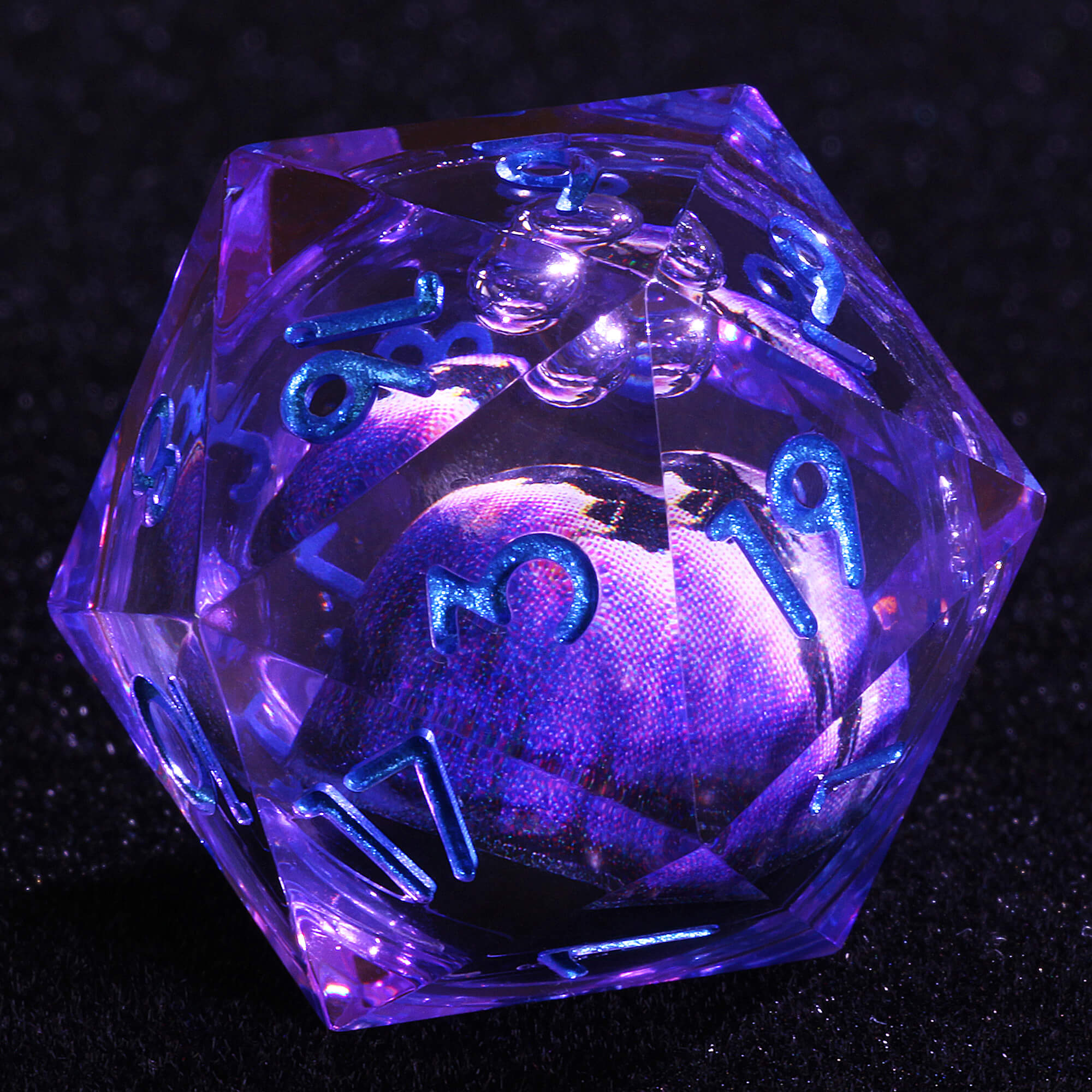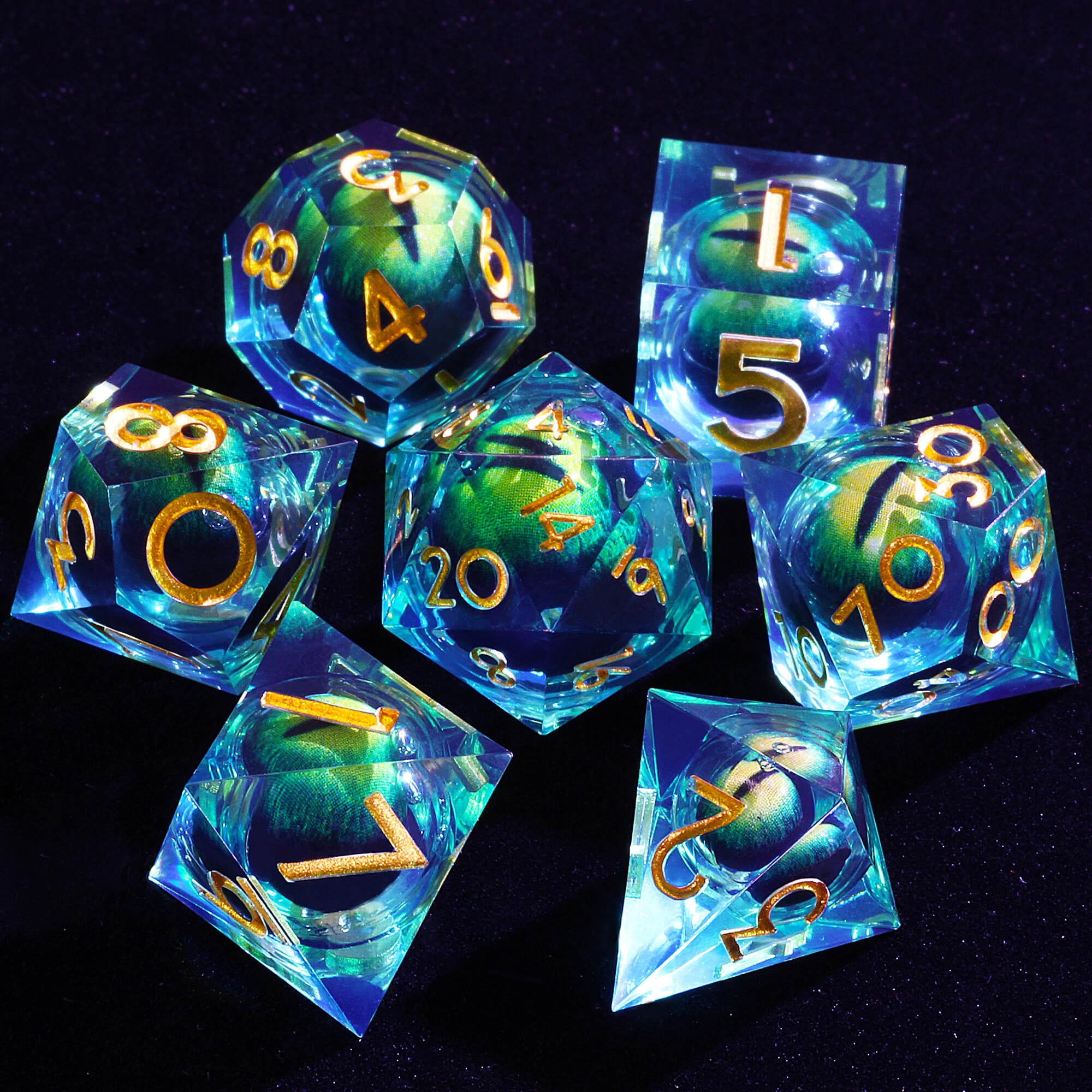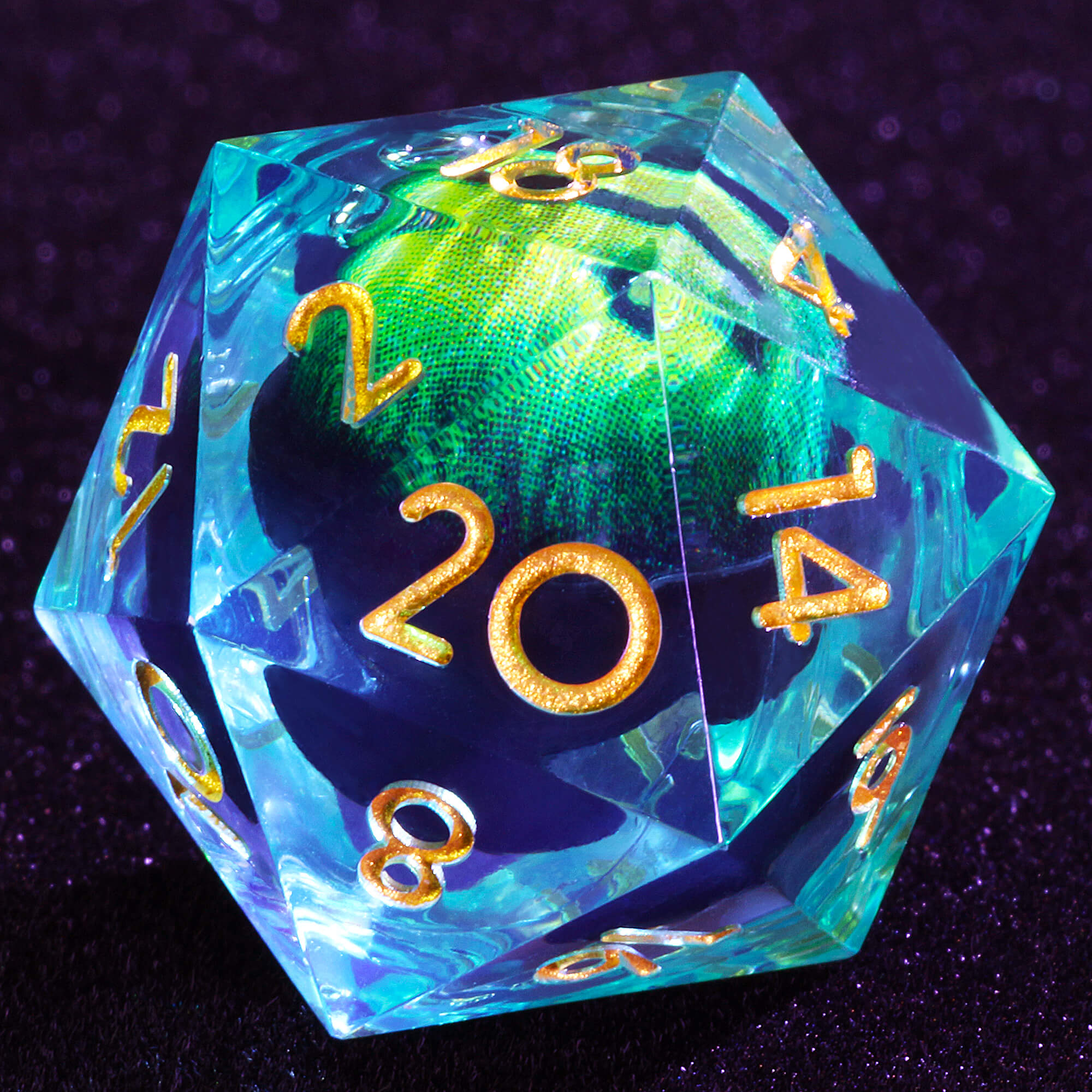Choosing the suitable dice for your tabletop RPG isn't just about picking a dice set that rolls well. The colors of your dice can influence your gameplay, your immersion in the game, and even your strategy. With so many options available, deciding which colors are right for you can be overwhelming. This guide will help you understand how dice colors can impact your tabletop RPG experience and offer tips on choosing the best ones for your needs.
Aesthetics and Personal Preference
Your Style, Your Story:
- Dice colors are a form of self-expression. They can reflect your personality, your character's theme, or simply what you find visually appealing.
- The color of your dice can become a part of your gaming identity, mainly if you consistently use a specific dice set.
Matching Your Character:
- Consider selecting dice colors that match your character's class or abilities. For example, a druid might use green dice or brown dice to symbolize nature, while a wizard might prefer deep purple dice or blue dice to evoke the mystical.
- Your dice can also complement your character's mood or current state in the game. A warrior facing a tough battle might switch to a more intense, fiery dice set to match the tension.
Visibility and Legibility
Easy on the Eyes:
- Bright, contrasting colors with bold numbers are easier to read, especially in low-light gaming environments. This ensures you can quickly determine your roll result without straining your eyes.
- Avoid dice with intricate patterns or colors that blend into each other, as they can make numbers challenging to discern. Transparent dice or speckled dice may look great, but they can be harder to read in certain lighting conditions.
Color Contrast Matters:
- Choose dice with numbers that contrast sharply with the background color. For instance, white numbers on a black die are highly legible, making it easier to read your rolls.
- Consider your typical gaming environment. If you play in dim lighting, opt for highly visible dice in such conditions. Additionally, if you're often moving between different gaming locations, having a versatile dice set in various lighting conditions can be beneficial.
Psychological Impact
The Influence of Color:
- Colors can have a psychological effect on players. Warm colors like red and orange evoke excitement and energy, while cooler tones like blue and green may promote calm and focus.
- Some players believe that specific colors bring them luck, while others may avoid colors they associate with bad rolls. It can affect your confidence during the game, even if it's a superstition.
Superstition vs. Strategy:
- Whether or not you believe in the luck factor, choosing dice colors that make you feel confident can improve your gaming experience. For some, it's about finding that "lucky" color, while others prefer colors that keep them calm and focused.
- If a specific color makes you feel more in control or lucky, it might give you the psychological edge you need. The power of belief can sometimes be as important as strategy.
Thematic Consistency
Immersion in the Game:
- Matching dice colors to the theme of your campaign can deepen immersion. For example, using icy blue dice and white dice in a winter-themed campaign can enhance the atmosphere, making each roll feel like a part of the story.
- Thematic consistency can also extend to the overall color scheme of your game materials, including character sheets, miniatures, and dice trays. Having everything work together visually can create a more cohesive and immersive experience.
Creating a Visual Story:
- Consider how your dice colors contribute to your campaign's visual storytelling. When the colors are tied to the narrative, each roll can feel more meaningful—for example, rolling a blood-red die when your character makes a critical hit can add to the moment's drama.
- Even outside of specific campaigns, you might have dice sets for different genres of games—fantasy, horror, sci-fi—each with its distinct color palette.
Group Dynamics and Coordination
Avoiding Confusion:
- In group settings, distinct dice colors can help avoid confusion during gameplay. If everyone has similar-colored dice, it can be easy to mix them up, leading to potential disputes or delays.
- Encourage players to choose unique-colored dice to identify their rolls, especially in fast-paced situations. This is particularly useful in games where multiple dice are rolled at once.
Coordinating with the Group:
- Some groups prefer coordinating dice colors based on roles or classes to streamline gameplay. For instance, all healers might use green dice, while tanks use red dice. This prevents confusion and adds a layer of organization to the game.
- Having each player use a different color in larger groups can make tracking rolls easier, especially when everyone is rolling simultaneously.
Color Symbolism in RPGs
Using Colors to Convey Meaning:
- Different colors can symbolize different attributes or themes in RPGs. For example, black might represent death or mystery, while gold can signify wealth or divine favor. Understanding these symbolic meanings can help you choose dice that enhance the narrative.
- Aligning your dice color with your character's journey or the campaign's theme can make each roll feel more significant and tied to the story.
Building a Connection:
- Over time, you might develop a connection to specific dice colors based on memorable moments in your games. These colors can become part of your gaming identity. For example, you might always use a particular dice set when playing a specific character because it reminds you of a past victory.
- Emotional attachment to certain colors can also enhance one's overall enjoyment of the game, making each session more personal and memorable.
Combining Multiple Colors
A Blend of Function and Flair:
- Some players enjoy using multi-colored dice sets to represent different aspects of their character's abilities. For instance, a sorcerer might use red dice and blue dice to signify fire and ice spells. This can also add a layer of strategy, as you associate certain colors with specific types of rolls.
- Multi-colored dice sets can also be used strategically to distinguish between different rolls, such as attack rolls versus skill checks. This helps keep the gameplay organized and can prevent mistakes during intense moments.
Color-Coded Dice for Easy Identification:
- For new players, identifying the correct dice can sometimes be challenging. One effective strategy is to use a set of dice where each die is a different color. For example, a red D20 or a purple D12 can simplify the process. Instead of referring to the dice by their type, players can be instructed to "roll the red die" or "roll the purple die," allowing for quicker and more intuitive gameplay, especially for beginners.
Customization and Uniqueness
Standing Out at the Table:
- Customizing your dice colors can make your dice set genuinely unique. Whether you order a custom set or mix and match from different dice sets, your dice can become a signature part of your gaming experience. This uniqueness can also be a conversation starter and a way to stand out in your gaming group.
- Customization also allows you to incorporate meaningful colors that might not be available in standard dice sets. For example, dice that match the specific shades of your character's outfit or the colors of your game's setting.
Personal Connection:
- Custom dice can also carry personal significance, especially if made for a specific campaign or gifted by a fellow player. These unique colors can make your dice feel more special and connected to your gaming memories.
- Over time, these personalized dice can become a cherished part of your collection, representing different phases of your gaming journey.
Conclusion: Choosing the right dice colors for your tabletop RPG is more than just a matter of aesthetics. It involves considering visibility, psychological impact, thematic consistency, and group dynamics. By understanding how different colors affect your game, you can make an informed decision that enhances your gameplay experience. Whether you opt for a bold, contrasting dice set or a thematic one that ties into your campaign, your dice colors can become a key part of your tabletop identity.

